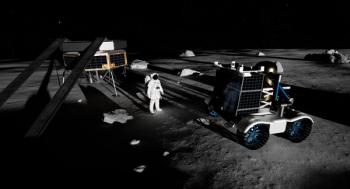
Exploring Secondary Model-Based Examination of Model-Free Analysis Results: Unveiling Hidden Insights in Chemical Data
A new publication explores the concept of secondary model-based examination of model-free analysis results in chemical data, revealing hidden insights. His research highlights the significance of integrating quantitative model-based evaluations to enhance data interpretation and extract valuable information.
Marcel Maeder, a researcher from the University of Newcastle, delves into the lesser-known aspect of Edmund R. Malinowski's work, focusing on his chemical model-based analyses of chemical data. Published in the Journal of Chemometrics, Maeder discusses the concept of subjecting primary model-free analysis results to a secondary quantitative model-based evaluation, offering two illustrative examples from Malinowski's research (1).
Although Malinowski is renowned for his work on factor analysis, his contributions to chemical model-based analyses often go unrecognized. In this research contribution, Maeder highlights Malinowski's innovative approach of subjecting primary model-free analysis results to a secondary quantitative model-based examination. The discussion revolves around two examples from Malinowski's research: the complexation of Cu2+ with cyclodextrin and the di- and trimerization of methylene blue.
In both examples, Malinowski employed spectrophotometric titration data, which were initially analyzed using window factor analysis (WFA) to generate concentration profiles. These primary, model-free results provided qualitative insights into the underlying chemical processes. However, Malinowski took it a step further by subjecting the concentration profiles to additional quantitative analyses based on the reaction models previously obtained. This secondary examination enabled the determination of numerical values for the equilibrium constants underlying the chemical reactions.
Maeder's research contribution serves to highlight and compare this methodology with alternative approaches to analyzing the same data. By incorporating secondary model-based evaluation, researchers can unlock hidden insights and extract quantitative information from model-free analysis results. This comprehensive approach allows for a deeper understanding of the chemical systems under investigation and enhances the overall interpretation of experimental data.
The work of Malinowski and the concept of secondary model-based examination have significant implications for chemical data analysis. By combining model-free and model-based approaches, researchers can maximize the utility of their data and extract valuable quantitative information that would otherwise remain obscured. This methodology opens doors for more comprehensive analyses and contributes to the advancement of chemometric techniques.
This research sheds light on an overlooked aspect of Malinowski's work, emphasizing the importance of integrating model-based evaluations in chemical data analysis. This research not only pays tribute to Malinowski's contributions but also inspires further exploration of innovative approaches to extract meaningful information from complex chemical systems.
Reference
(1) Maeder, M. Secondary, Model-Based Examination of Model-Free Analysis Results. Making the Most of Soft-Modelling Outcomes. J. Chemom. 2023, ASAP. DOI:
Newsletter
Get essential updates on the latest spectroscopy technologies, regulatory standards, and best practices—subscribe today to Spectroscopy.



